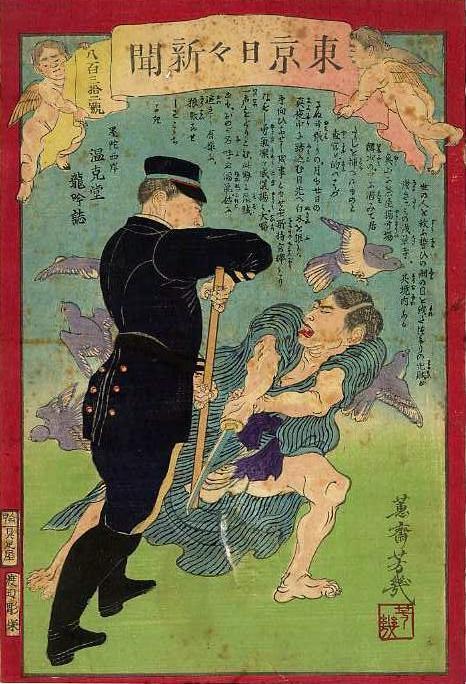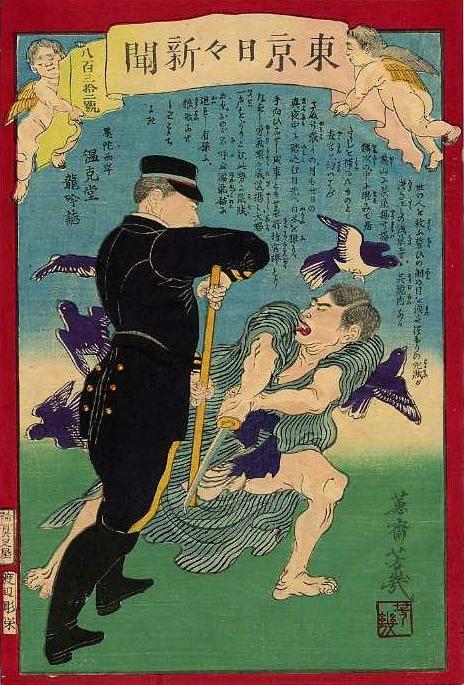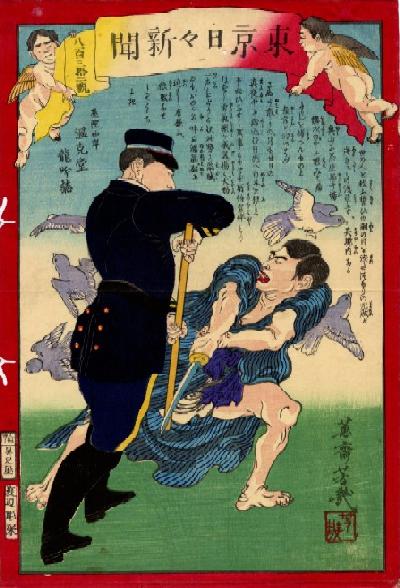Commentary
According to the newspaper article on which the writer based this story, the incident took place at three in the morning at an archery gallery (揚弓場 yaukiuba, yōkyūba) called Shōjutei (松寿亭). Some 40 to 50 patrolmen converged on two outlaws (賊 zoku) who had drawn their swords. The police had staked out the area and chosen the time and place to catch their prey.
bad guy reflects 兇賊 (凶賊) -- "kyōzoku" in Sino-Japanese, but here read "warumono". rat outlaws (鼠賊 sozoku) were petty thieves and other such minor pests. wet rats (濡鼠 nurenedzumi, nurenezumi), while literally referring to wet rats (and hence, here, petty outlaws), was also a metaphor or simile for people who got drenched with their clothes on.
officer's stick reflects 官棒 (kuwanbou, kwanbō kanbō) -- later, and now, 警棒 (keibō) -- police nightstick, billy (club), truncheon.
lost like the proverbial wolves reflects 狼敗 (rouhahi, rōhai) -- which is not a true compound. I am treating it as a playful swapping of the character for "lose" (敗 hai) into the established compound 狼狽 (rōhai, rōbai). In Chinese folklore, the compound refers to two wolf-like animals -- the former with long forelegs and short hindlegs, the latter the opposite. Together they are strong, but separated they panic and collapse. (Kojien, 5th edition)


